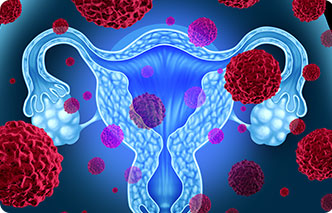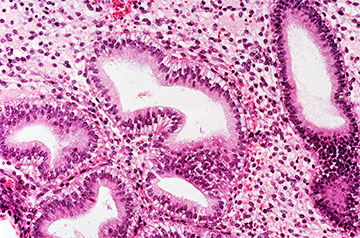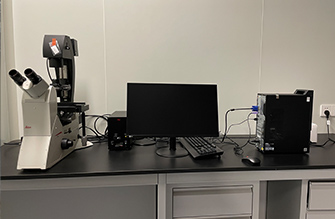Research Direction
Direction No.1.
:Research on precision screening and immunotherapy of uterine malignancies
-
 (1) Research and development for new technologies for accurate screening of cervical cancerRead moreAiming at the shortcomings of the current international three-step diagnostic method for cervical cancer, which is expensive and inaccurate, the roles and mechanisms of multiple miRNAs in the carcinogenesis of HPV are discovered basing on the previous mapping of the hotspot map of HPV integration in the human genome and research of the mechanism of HPV integration. It is proposed to establish a new strategy for accurate screening and shunting of cervical cancer based on HPV integrated detection,
(1) Research and development for new technologies for accurate screening of cervical cancerRead moreAiming at the shortcomings of the current international three-step diagnostic method for cervical cancer, which is expensive and inaccurate, the roles and mechanisms of multiple miRNAs in the carcinogenesis of HPV are discovered basing on the previous mapping of the hotspot map of HPV integration in the human genome and research of the mechanism of HPV integration. It is proposed to establish a new strategy for accurate screening and shunting of cervical cancer based on HPV integrated detection, -
 (2) Precise treatment of uterine malignant tumors under the guidance of molecular subtypingRead moreStratified treatment strategies are explored basing on a new molecular typing method for endometrial cancer, cervical cancer and other uterine malignancies, which is established by a high-resolution single-cell map of the disease microenvironment drawn on single-cell multi-omics technology. To realize the precise diagnosis and treatment of uterine malignant tumors, the diagnostic molecular markers of various kinase inhibitors are analyzed such as immune checkpoint inhibitors and tyrosine kinases
(2) Precise treatment of uterine malignant tumors under the guidance of molecular subtypingRead moreStratified treatment strategies are explored basing on a new molecular typing method for endometrial cancer, cervical cancer and other uterine malignancies, which is established by a high-resolution single-cell map of the disease microenvironment drawn on single-cell multi-omics technology. To realize the precise diagnosis and treatment of uterine malignant tumors, the diagnostic molecular markers of various kinase inhibitors are analyzed such as immune checkpoint inhibitors and tyrosine kinases -
 (3) Cellular immunotherapy of uterine tumorsRead moreReady-to-use primary antigen libraries and personalized secondary antigen application libraries are constructed for tumor patients to discover tumor-specific antigens and corresponding T cell receptor sequences, by using single-cell sequencing technology and immune repertoire. Basing on these libraries, the separation and culture of the high-purity tumor-infiltrating lymphocytes (TIL) derived from cervical cancer tissue is optimized, and the anti-tumor effect of TIL on cervical cancer can be fur
(3) Cellular immunotherapy of uterine tumorsRead moreReady-to-use primary antigen libraries and personalized secondary antigen application libraries are constructed for tumor patients to discover tumor-specific antigens and corresponding T cell receptor sequences, by using single-cell sequencing technology and immune repertoire. Basing on these libraries, the separation and culture of the high-purity tumor-infiltrating lymphocytes (TIL) derived from cervical cancer tissue is optimized, and the anti-tumor effect of TIL on cervical cancer can be fur
Direction No.2.
:Research on metastatic drug resistance mechanism and new treatment technologies of ovarian cancer
-
 (1) Genetic and epigenetic regulatory mechanisms of ovarian cancer metastasisRead moreOvarian cancer metastasis is a difficult point in clinical treatment, and its specific mechanism needs to be elucidated. The genetic characteristics of ovarian cancer metastasis can be explicated by analyzing the genetic abnormality data of ovarian cancer patients. High-throughput sequencing technology is used to construct the whole transcriptome expression map of tissue samples from ovarian cancer patients and screen differentially expressed coding genes and non-coding RNAs, and further to elab
(1) Genetic and epigenetic regulatory mechanisms of ovarian cancer metastasisRead moreOvarian cancer metastasis is a difficult point in clinical treatment, and its specific mechanism needs to be elucidated. The genetic characteristics of ovarian cancer metastasis can be explicated by analyzing the genetic abnormality data of ovarian cancer patients. High-throughput sequencing technology is used to construct the whole transcriptome expression map of tissue samples from ovarian cancer patients and screen differentially expressed coding genes and non-coding RNAs, and further to elab -
 (2) Drug resistance mechanism and reversal strategy for ovarian cancerRead moreDrug resistance is the main cause of ovarian cancer treatment failure and patient death, including resistance to conventional chemotherapy drugs and targeted drugs. We plan to screen molecular targets related to drug resistance to clarify the mechanism of action of key molecules, by using transcriptomics, proteomics, metabolomics and other multi-omics technologies. This includes the established of a high-throughput drug or small molecule compound screening platform based on organoid models, whic
(2) Drug resistance mechanism and reversal strategy for ovarian cancerRead moreDrug resistance is the main cause of ovarian cancer treatment failure and patient death, including resistance to conventional chemotherapy drugs and targeted drugs. We plan to screen molecular targets related to drug resistance to clarify the mechanism of action of key molecules, by using transcriptomics, proteomics, metabolomics and other multi-omics technologies. This includes the established of a high-throughput drug or small molecule compound screening platform based on organoid models, whic -
 (3) Research and development of new technologies for ovarian cancer treatmentRead moreAt present, the main treatments for ovarian cancer include surgery, chemotherapy and maintenance therapy, while tumor resistance and recurrence are still the main causes of patients’ death. Therefore, the development of new treatment technologies is the key to tackle the bottleneck of ovarian cancer treatment. For this, we aim to develop new antibody-based immunotherapy methods that activate T cells to mediate anti-tumor effect. For example, the antibody that targets the tumor specific surface a
(3) Research and development of new technologies for ovarian cancer treatmentRead moreAt present, the main treatments for ovarian cancer include surgery, chemotherapy and maintenance therapy, while tumor resistance and recurrence are still the main causes of patients’ death. Therefore, the development of new treatment technologies is the key to tackle the bottleneck of ovarian cancer treatment. For this, we aim to develop new antibody-based immunotherapy methods that activate T cells to mediate anti-tumor effect. For example, the antibody that targets the tumor specific surface a
Direction No.3.
:Research on pathogenesis and personalized comprehensive diagnosis and treatment of endometriosis
-
 (1) Mechanism of neuroinflammatory pain in endometriosisRead moreOne of the characteristic clinical symptoms of endometriosis is pain, which seriously affects women's quality of life. To tackle this challenge, we aim to use transcriptomics to screen genes and non-coding RNAs related to pain severity to reveal a new mechanism of neuroinflammatory pain in endometriosis, as well as spatial transcriptomics to comprehensively reveal the key pathways and regulatory mechanisms of pain in endometriosis associated with the related nerve fibers, vascular distribution
(1) Mechanism of neuroinflammatory pain in endometriosisRead moreOne of the characteristic clinical symptoms of endometriosis is pain, which seriously affects women's quality of life. To tackle this challenge, we aim to use transcriptomics to screen genes and non-coding RNAs related to pain severity to reveal a new mechanism of neuroinflammatory pain in endometriosis, as well as spatial transcriptomics to comprehensively reveal the key pathways and regulatory mechanisms of pain in endometriosis associated with the related nerve fibers, vascular distribution -
 (2) Immune microenvironment and its regulation in endometriosisRead moreThe occurrence and development of endometriosis is closely related to the local microenvironment. Based on the menstrual reflux theory, we seek to draw an immune cell map by single-cell sequencing of the peritoneal fluid of patients with endometriosis. According to this map, the cell types and abnormal functions of immune cells will be analyzed to clarify the regulatory mechanism of the immune microenvironment. Finally, we aim to discover key molecular targets that accurately predict the develop
(2) Immune microenvironment and its regulation in endometriosisRead moreThe occurrence and development of endometriosis is closely related to the local microenvironment. Based on the menstrual reflux theory, we seek to draw an immune cell map by single-cell sequencing of the peritoneal fluid of patients with endometriosis. According to this map, the cell types and abnormal functions of immune cells will be analyzed to clarify the regulatory mechanism of the immune microenvironment. Finally, we aim to discover key molecular targets that accurately predict the develop -
 (3) Non-invasive and minimally invative precision therapy for endometriosisRead moreEndometriosis is a chronic disease, which is difficult to treat accurately and prone to recurrence. We plan to develop accurate stratification strategy for endometriosis treatment by combining comprehensive imaging and clinical features. The precision therapy will be enhanced by research and development of new drugs and slow-release systems with nano packaging, as well as the non-invasive treatment of endometriosis by utilizing fertility-sparing double-flap hysterectomy and nerve-sparing minimal
(3) Non-invasive and minimally invative precision therapy for endometriosisRead moreEndometriosis is a chronic disease, which is difficult to treat accurately and prone to recurrence. We plan to develop accurate stratification strategy for endometriosis treatment by combining comprehensive imaging and clinical features. The precision therapy will be enhanced by research and development of new drugs and slow-release systems with nano packaging, as well as the non-invasive treatment of endometriosis by utilizing fertility-sparing double-flap hysterectomy and nerve-sparing minimal
















 Addr: 268 Kaixuan Rd, Hangzhou 310029, P.R. China
Addr: 268 Kaixuan Rd, Hangzhou 310029, P.R. China Tel: 0571-86971817
Tel: 0571-86971817 Email:
Email: 
